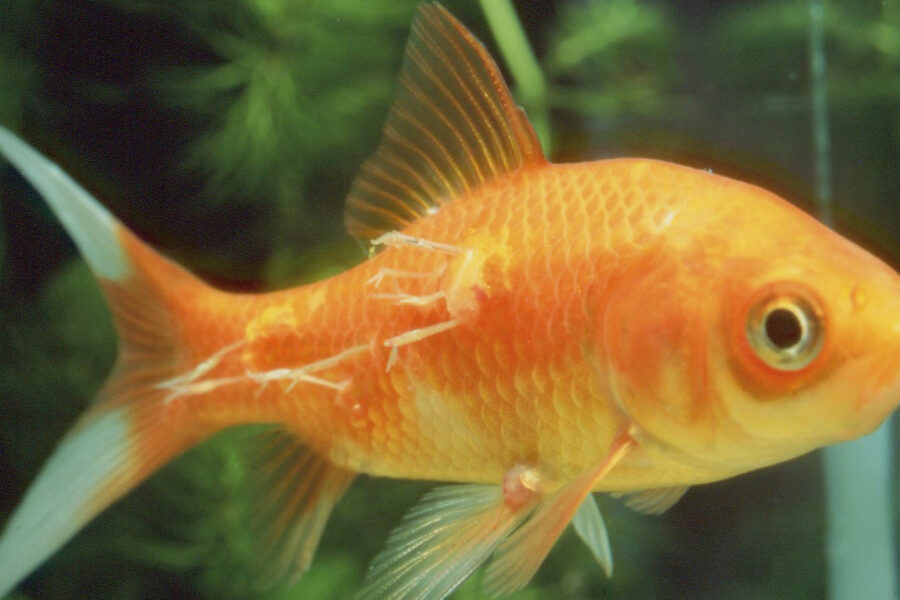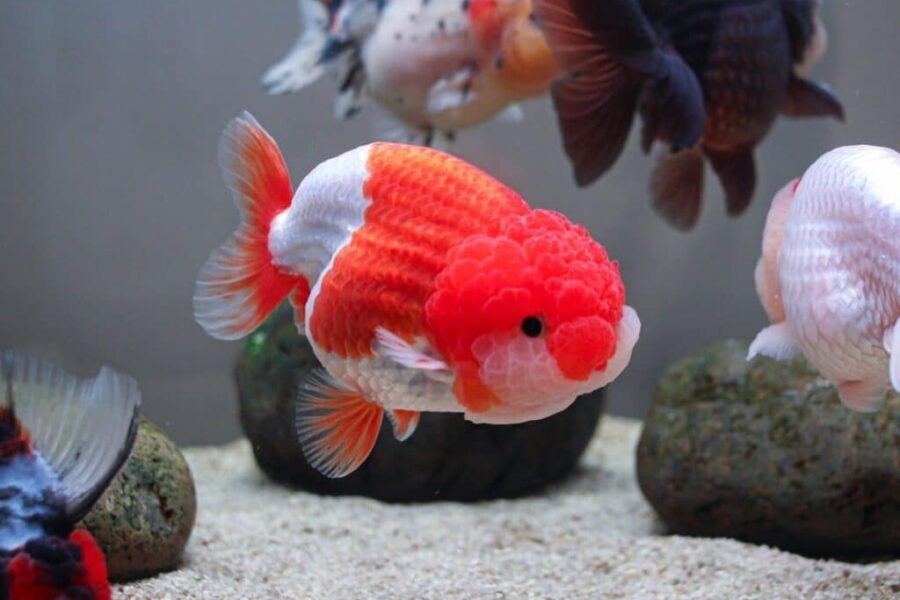
You’ve heard of gold rush, but have you heard of goldfish rush? It’s the similar kind of exhilaration, only a bit less muddy and a lot more indoors. Welcome to the entertaining world of raising goldfish where the pot of gold is, well, the goldfish itself. This gold(y) experience is not just about ducking out to a pet store, pointing at the shiniest fish, and getting it home. It’s about providing a nurturing environment where your goldfish can explore its full potential and grow to be the best, or rather the biggest, version of itself. So sit tight, because we are about to set sail on the gold(y) shores of goldfish growth.
Why Goldfish Are Popular Pets?
If dogs are men’s best friends, then goldfish are undoubtedly their most low-maintenance pals. In the enigmatic world of ornamental fish, goldfish stand out with their vibrant shades of gold, red, and sometimes, even black! Known for their interactive nature and less demanding care, goldfish are popular pets among many. They don’t need to be walked, won’t chew your furniture, and if you’re lucky, you won’t have to scoop their poop either! Plus, they’re silent observers, always lending a patient fin when you need someone to rant about your day. Goldfish popularity contest? Consider it won!
But the real joy of having a goldfish doesn’t stop at just having it–it’s all about watching them grow! Ready to dive into the gleeful waters of goldfish growth? Then read on, my prospective goldfish enthusiasts.
The Joy of Watching Your Goldfish Grow
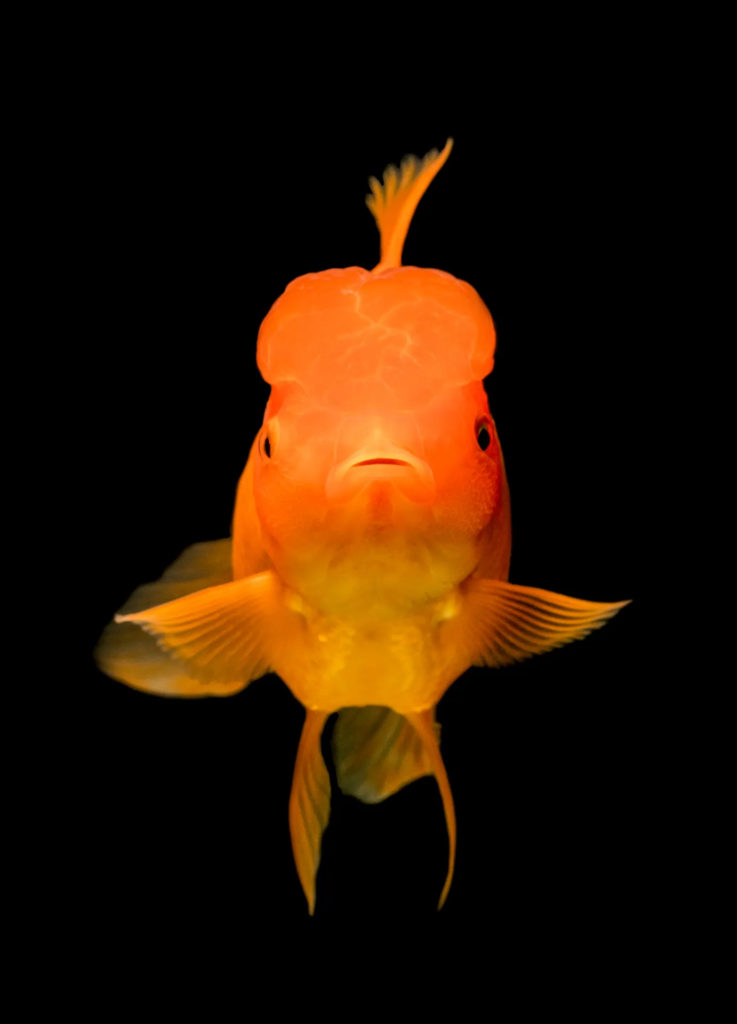
Ever noticed how everything’s more fun when you can see growth? When you’re working out, you keep track of the extra pounds shed, or when learning a new instrument, the additional notes your fingers can easily dance over. Similarly, the pleasure of having a goldfish multiplies when you see it blossom from a tiny swimming nugget to a full-fledged, majestic golden flapper.
Witnessing your goldfish grow is not just about physical change; it’s about observing their personality unfold, their behaviors change, and their interactive nature develop. It’s a test of your caretaking abilities and patience, and the reward? A beautifully matured, healthy goldfish. Feels a bit like being a proud parent, doesn’t it?
Now that you know why goldfish are such beloved pets and the joy of watching them grow, ready to learn how to create the perfect growth-promoting environment? Fasten your seatbelts, folks, because this ride is about to get wet and fishy. We’re entering the deep waters of goldfish habitats next.
Creating the Perfect Environment to Make Goldfish Bigger

When it comes to setting the stage for speedy goldfish growth, imagine it like planning for the ultimate Hawaiian vacation. You wouldn’t want mediocre accommodations and dismal weather to ruin your time right? Likewise, your goldfish needs the perfect underwater paradise. Let’s delve into what this entails.
Choosing The Right Tank Size for Your Goldfish
Selecting a tank for your goldfish isn’t simply about buying what fits your budget or matches your decor. It’s like choosing a house; size matters. Keeping a goldfish in a small, cramped tank is equivalent to being provided only a small closet to live in. Cramped and boring right? A larger tank provides your fish more room to swim, grow, and thrive. Ideally, a single goldfish needs a tank that holds a minimum of 20 to 30 gallons of water – yes, goldfish dreams big!
On to the next key aspect of environment – maintaining the perfect water temperature. Kind of like Goldilocks – Not too cold, not too hot, but just right!
Maintaining The Ideal Water Temperature
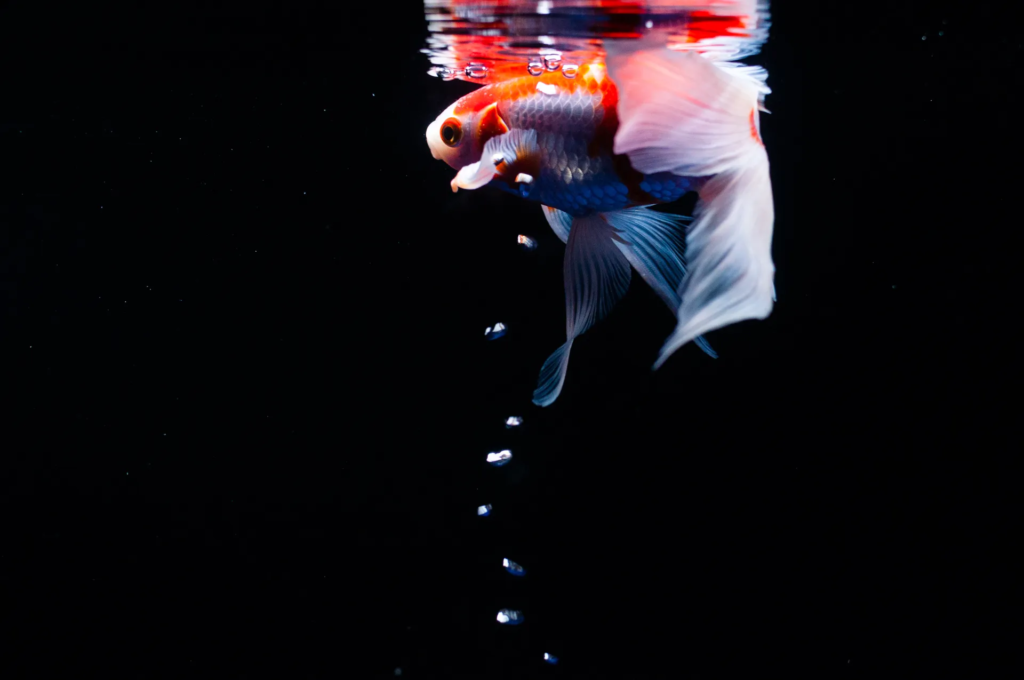
Goldfish aren’t exactly into hot tubbing; neither do they enjoy ice baths. They prefer a lukewarm environment. The ideal water temperature for goldfish is typically between 65 to 75 degrees Fahrenheit (18 to 24 degrees Celsius). This is one area where you don’t want to follow the mainstream tropical fishkeeping trends. Too hot or too cold can lead to stress and illness, slowing down growth. To ensure consistent temperatures, a reliable aquarium heater and thermometer are your best buddies.
Now that we’ve got the temperature covered, let’s discuss the importance of H2O’s BFFs – filtration and aeration.
Providing Proper Filtration and Aeration
Goldfish aren’t exactly known for their table manners. They eat and expel waste a lot, which can quickly turn their tank into a cesspool if not handled properly. That’s where effective filtration comes in. Good filtration maintains water quality by removing toxins and keeping the water sparkling clean.
Aeration, on the other hand, assists the dissolving oxygen in the water, which your goldfish inhales (well, in a fishy kind of way). An air pump and air stone will keep the water literally bubbling with life-giving oxygen. Quietly whispering to your goldfish all day is not a viable alternative, sorry!
We’ve prepared the perfect stage for our goldfish’s growth. The next factor in our goldfish growth guide? A diet worthy of a gluttonous goldfish king or queen. Let’s swim over to feeding strategies in our next lap.
Feeding Strategies to Make Your Goldfish Bigger

Having a nibble at the hearty meal of knowledge we’ve served so far? Excellent! Now, let’s dive into the main course of our goldfish growth journey. And what’s more substantial than food? All creatures, from humans to goldfish, grow and thrive based on what we feed them. It may not be rocket science, but it sure as fins is fish-science! Let’s explore the munching mouthfuls of nutritional strategies that could make your goldfish swim faster than Aquaman in a sushi buffet line.
Understanding the Nutritional Needs of Goldfish
Just as you wouldn’t thrive on a diet of cotton candy and licorice, your goldfish requires a balanced diet. Goldfish are omnivores, craving a mix of both plants and protein to hit their growth spurt right. They relish on small crustaceans, insects, and various plant matters in the wild. These humble swimmers can’t pop into a convenience store at 2 AM for a nutrition bar but rely on you. So, play the part of a responsible pet parent and make sure each meal fuels that little swimmer towards greater growth.
Choosing the Right Food for Growth
Let’s face it, your goldfish can’t swim up and say, “Hey hooman, stop the flakes, I want brine shrimp today!” But, through careful observation, you can discern what makes their taste buds (yes, fish have them) tingle. You can alternate between high-quality flakes or pellets, fresh or frozen foods like bloodworms, brine shrimp, and veggies like peas (shelled, of course). The key is to provide a varied, balanced diet that aligns with their nutritional requirements. Remember the golden rule, top-quality feed results in top-quality growth!
Implementing a Feeding Schedule
Unlike us, goldfish don’t indulge in brunch on weekends or 3 PM snack breaks. They lack stomachs (shocking, I know), so they can’t gobble down a large meal and digest it over the day. Instead, they’re like eat-as-you-go road trippers, preferring small meals throughout the day. Aim for feeding them 2-3 times a day, only as much as they can consume in 2 minutes. Overfeeding can lead to water pollution and heath issues (eek!).
Now that we’ve chomped our way through goldfish nutrition, let’s swim onto a more aesthetic part of their life. Shall we make their homes a teensy weensy bit more exciting? Time to decorate their crib and keep those little buddies physically active, which in turn drives their growth. Onward to exploring the world of enrichments!
Enhancing Growth with Enrichments

Amping up the growth of your goldfish does not limit itself to just minimum tank setups and nutritious meals. Think of it as upgrading from economy to business class; with a little more investment, you can significantly improve the growth and overall health of your beloved pet. Let’s enrich their life and watch them grow faster than you can say “goldfish growth spurt”!
Adding Live Plants to the Tank
Live plants? Yes, you heard it right (or better yet, read). These little pieces of Mother Nature serve not just as a royal feast for the eyes, but also as a buffet green for your goldfish. They offer tremendous benefits, from providing extra oxygen, natural hiding spots, a playground, and even serving as occasional snacks (Warning: your lush decor might be reduced to a stub, goldfish relishes vegetation). Remember, a happy goldfish equals a rapidly growing goldfish, and nothing says happiness more than a plant-filled party in the tank!
Introducing Floating Objects for Exercise
Now, you’d be forgiven for thinking that floating objects in a goldfish tank were only for the aesthetics. Oh, how wrong you’d be! Floating objects play a critical role in the exercise regime of your goldfish. They serve as the underwater version of an obstacle course. Goldfish are intelligent and curious creatures who love a good swim-around to keep themselves fit and feisty. Imagine it as your goldfish’s personal gym. Yes, folks, goldfish do cardio too!
Incorporating Natural Décor Elements
A bare tank can be as depressing for your goldfish as an unfurnished apartment can be for us humans. So, let’s turn that tank into a cozy goldfish sanctuary! Add in some natural stones, driftwood or eco-friendly sculptures. This will create a more stimulating environment for your pet, encouraging them to explore and interact with their surroundings. With that, it increases their mobility, appetite, and overall happiness – all vital aspects promoting growth. Just remember, the decor should be safe and without sharp edges that might injure your aquatic buddies.
Now that we’ve spruced up and turned our tank from drab to a plush and fun-filled haven, let’s steer this ship to the iceberg that we have ignored so far – the mistakes we make in our pursuit of a beefy, large goldfish. Stay tuned for the next chapter where we unfold the common blunders in the journey of raising a goldfish.
Avoiding Common Mistakes to Make Your Goldfish Bigger

When it comes to goldfish husbandry, even the most fun-filled frolicking can be marred by a few erroneous practices. This section aims to steer clear your goldfish admiration venture away from the pitfalls of common mistakes.
Overfeeding Dangers and Consequences
Did you know that your innocent-looking attempts at feeding your goldfish could be leading it down the lethal path of overeating? More shocking might be the revelation that Goldfish, like humans on a junk food binge, cannot stop themselves from munching away if those tasty morsels keep pouring in! Overfeeding leads to bloating, obesity, constipation, poor water quality (because of leftover food), and a shorter lifespan for your fishy friend. So always remember, your goldfish’s stomach is as small as its eye. Keep the portions small, my goldfish-owning comrades!
Now that we know how not to let our goldfish eat themselves into oblivion, let’s move on to reading their behavioral cues. Because as we know, a happy goldfish equals a happy fish owner, right?
Recognizing Signs of Stress or Illness

If your goldfish were as expressive as a teary-eyed puppy, caring for them would be a lot easier, alas! Instead, we need to be a bit of fishy Sherlock Holmes. Stress or illness in goldfish spike up when they exhibit unusual activities, like hiding, erratic swimming, loss of color, frayed fins, or gasping at the surface. Commit these signs to memory, folks! Early detection can mean the difference between doing a happy fish dance together or a silent, sorrowful farewell.
Speaking of early detection, it brings us to the next preventive measure. It’s a bit scientific but don’t be worried, it’s as simple as high school lab class. Yes, it’s water testing time!
Performing Regular Water Tests

Oh, the beauty of pristine, crystal clear water! But wait, clear doesn’t necessarily mean clean. Testing your tank’s water is crucial to ensure an optimal environment. Regular water tests detect possible issues such as low oxygen levels, high ammonia, nitrate or nitrite levels, and extreme pH shifts. These all could make your goldfish queasy. Don’t panic on hearing those chemical names. Most pet stores provide easy-to-use water testing kits. So don that scientist lab coat, and take the plunge for your water buddy’s health!
Having successfully navigated these common pitfalls, you are now ready to manage any potential health issues. Because let’s face it, googling fishy symptoms in the middle of the night can only be fun for so long!
Dealing with Potential Health Issues

Just like your nosy aunt at the family reunion, health issues can sneak up on your little aquatic buddy when you least expect it. It’s essential to not only know the signs of trouble but also how to deal with them.
Identifying and Treating Common Goldfish Diseases
Your first line of defense should be “know thy enemy.” The most common goldfish illnesses include Ich (white spot disease), fin rot, and sadly, the goldfish version of a common cold, the goldfish flukes. Symptoms can vary from white spots (if it looks like your goldfish shook hands with a snowman, it’s got Ich), frayed or decaying fins, and an unusual swimming pattern.
Caring for an unwell goldfish can become a scene straight out of Grey’s Anatomy but worry not! Quarantine the affected fish in a hospital tank, adjust the tank temperature, and try some over-the-counter meds. Remember, Dr. Google is helpful but not always accurate. One goldfish’s fin rot might be another’s swim bladder disease, which means treatment can vary.
Obtaining Professional Help When Needed
It’s no secret that even the best of us need a helping hand sometimes, and let’s face it, unless you’ve studied Ichthyology (no, it’s not about itchy skin), it can get overwhelming caring for a sick goldfish. Don’t be afraid to fly in the aquatic vets for an SOS when the need arises. They know their gill rot from their faded color syndrome and can guide you towards the most effective treatment. Yes, fish vets are an actual thing, and no, they don’t all look like the animated vet from Finding Nemo!
Maintaining a Clean and Disease-Free Tank
Prevention, as they say, is better than cure, so let’s turn our efforts towards ensuring your goldfish’s crib stays clean and disease-free. A regularly cleaned tank, filtered water, and proper feeding will do wonders to prevent disease. Think of it as the fish-version of eating your veggies and regular workouts. Good tank management is the equivalent of your fuzzy golden buddy telling potential diseases, “unaesthetic diseases, you shall not pass!”
We’re almost there, folks, and as we leave these troubled waters behind, let’s turn up the fun meter and dive into something a little more exciting. Yes, it’s time to measure and celebrate your goldfish’s growth! So grab your camera, prepare your celebratory speeches, and watch out for that 7-inch giant lurking in your tank. Tune in for the next section.
Measuring and Celebrating Your Goldfish Bigger
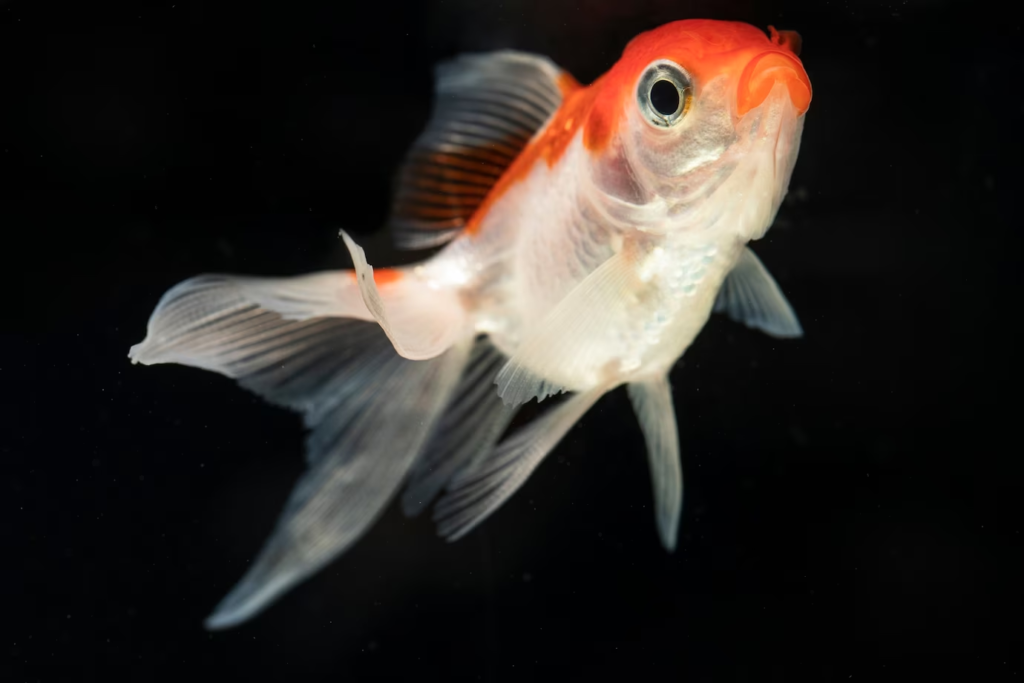
Watching your goldfish grow can be one of the most gratifying parts of owning a pet. It’s sort of like watching your favorite TV series—once you start, you can’t wait to see what happens next!
Using Measuring Techniques to Track Growth
So, how do we track this little soap opera? It’s pretty simple. Once a month, use a plastic ruler to measure your fish from the tip of its snout to the base of its tail (also known as the ‘standard length’). Keep a record of this measurement in a notebook or a smartphone app. Remember, this is a fun activity—no need to suit up like it’s a major scientific experiment. You might get a few curious looks if you’re walking around wearing a white lab coat and safety goggles.
Transitioning to our next point, apart from just raw measurements, it’s also important to jot down any “wow” moments or firsts you observe.
Recording Growth Milestones and Achievements
Think of these moments like your child’s first word or the first step. For your goldfish, it could be the first time it performs a perfect ‘loop the loop’ or the day it officially outgrows the snail (Finally, the tables have turned!). Celebrating these milestones can make caring for your goldfish even more rewarding, and gives you plenty of fun anecdotes to share at your next socially-distanced Zoom party.
Why keep all this joy to yourself though? Sharing your goldfish’s progress and milestones with others can be a great way to engage with a community of like-minded goldfish lovers. Let’s talk more about that.
Sharing Your Goldfish’s Progress with Others
Friends, family, social media followers—they all need to hear about your goldfish’s latest shenanigans. Not only does sharing this info make you the official “Goldfish Whisperer,” but it helps you connect with others who can share tips, tricks, and fish-friendly jokes. You know, those “Why don’t fish play basketball? Because they’re afraid of the net!” kind of jests. Plus, cute goldfish pictures and videos can instantly brighten someone’s day.
As we wrap up this section on tracking and celebrating growth, remember to hold your applause till the end, folks! Your goldfish can’t take a bow but it can wag its tail a little extra for you. Now, let’s get serious for a moment and delve into some potential goldfish health issues and how to handle them.
To Sum Up
A journey of a thousand miles begins with a single step, and so does the growth of your goldfish. It might be an everyday pet, but the grandeur of your goldfish’s growth embodies an exciting masterpiece in slow motion, which never fails to intrigue our curiosity or warm our hearts.
Appreciating The Satisfaction of Seeing Your Goldfish Thrive
Goldfish are more than just pets. They are companions that share our space, that light up our living room corners and of course, compete with us in staring contests (which they unfairly win all the time). Witnessing your goldfish thrive in their aquatic haven can bring you as much satisfaction as acing a difficult level in Candy Crush. It’s this wonderful feeling of “Look, Mom, I did it!” But instead, it’s “Look, world, my goldfish grew!” The growth of your goldfish is arguably the best reality show you could enjoy from the comfort of your own home.
Remember, however, that journeying with your goldfish from its very first blip of infancy to its vibrant, majestic adulthood, is a deeply rewarding exercise in patience and consistency. Love and attention are key ingredients here. So let’s dive into that next.
Continuing to Provide Care and Attention
You can’t just feed your goldfish and forget about it, unless you’re secretly a wizard who has a magic wand that takes care of everything. Much like how you can’t enjoy the benefits of having a gym membership card without actually sweating in the gym, you can’t expect to see your goldfish grow without consistent care and attention all through its life.
Caring for your goldfish can sometimes feel like a ‘Fin-tastic Marathon’. Just when you think you’ve crossed the finish line, another lap is added. One moment you are keeping the water temperature in check, and in the blink of an eye, you’re treating an infection. It’s a continuous journey of discovery with your aquatic buddy!
Providing consistent care and attention to your goldfish not only means they will continue to grow at an optimal rate, but it also means you get to enjoy the sparkling company of your goldfish for years to come. And that, dear friend, is the true pot of gold at the end of the rainbow.
As you revel in this fish owner euphoria, remember – every milestone achieved with your goldfish is a ripple in the vast ocean of your pet care journey. And each tiny victory is just as meaningful as the next. So, here’s to you and your goldfish— to a journey full of surprising twists and memorable splashes.
Frequently Asked Questions (FAQ)
Q: How quickly does a goldfish typically grow?
A: A healthy goldfish in an ideal environment can grow up to an inch per year, but overall growth depends on various factors, including genetics and living conditions. If you’re interested in finding out more about this topic, you might want to read Unlocking the Secrets to Optimal Goldfish Growth. This article provides a deeper dive into the factors influencing the growth of your goldfish and tips for optimizing their development.
Q: What’s the best size for a goldfish tank?
A: As a rule of thumb, you should provide at least 20 gallons of water for one goldfish and ten additional gallons for each extra goldfish.
Q: How often should I feed my goldfish for maximum growth?
A: Feeding your goldfish two to three times a day is just about right. Make sure to only provide what they can consume in 2 minutes to avoid overfeeding.
Q: Can overfeeding really hamper my goldfish’s growth?
A: Absolutely! Overfeeding can lead to various health issues like obesity and swim bladder disorder, which can ultimately hinder your goldfish’s growth.
Q: How can I incorporate live plants into the tank?
A: You can do this by simply buying goldfish-safe live plants from your local pet store or aquarium supply store and placing them in your tank. They serve as natural filters and provide an enriching environment for your fish.
Q: What are some common health issues that could stunt my goldfish’s growth?
A: Common issues include fin rot, swim bladder disease, constipation, and infections from untreated water. Regular cleanliness and care can prevent most of these problems.
Q: How do I measure my goldfish’s growth?
A: Measuring your goldfish’s length from nose to tail fin every month can help you track its growth rate accurately.
Q: What should I do if my goldfish isn’t growing?
A: If your goldfish isn’t growing, it might be due to issues like inadequate nutrition, poor living conditions, or even health problems. Seek professional help if you suspect any serious concerns.


